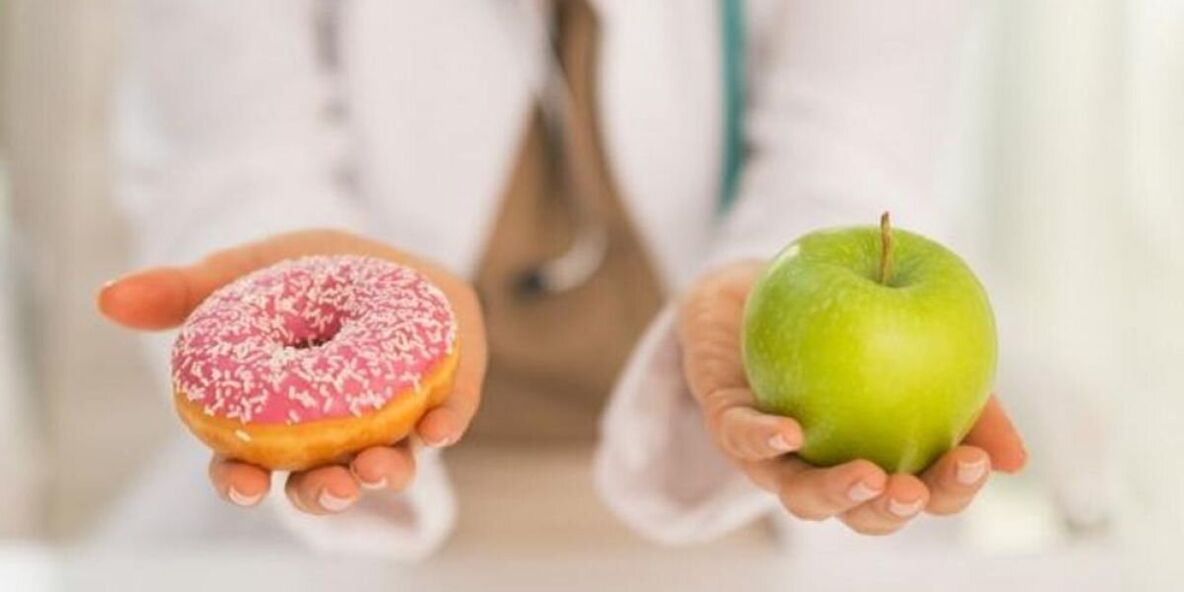
There is no cure for diabetes. It is believed that the goal of treatment is achieved when blood sugar is in the normal range, which is to prevent complications. Treatment includes diet therapy, exercise, drug therapy, and prevention of complications.
Diet for diabetes is the basis of treatment. Proper nutrition helps to improve the condition and cope with the symptoms. Yes, you will have to radically modify your diet and regimen. Yes, must give up sweet and fatty. And yes, there will be many restrictions in your diet. Doesn't the prospect of eating cabbage and rye bread for the rest of your life inspire you? Don't be sad!
Diets for type 1 and type 2 diabetes can be very varied. The main thing is to understand what you can and cannot eat.
Focus: carbohydrates
Carbohydrates are the main source of energy. For diabetes, they should make up 50-60% of the caloric value of the diet. Foods that contain carbohydrates are generally divided into two groups:
- Fast (simple) carbohydrates. They are absorbed within 15-20 minutes of consumption and lead to an immediate increase in blood sugar. It is any sweets, starches, sugars, potatoes, white bread, semolina and rice cereals. Their use will have to be abandoned.
- Slow (complex) carbohydrates are absorbed within a few hours. These are almost all cereals, cereal breads, vegetables, fruits, berries. They can and should be consumed, but you will have to strictly control the amount.
Cucumbers, tomatoes, cabbage, zucchini, eggplant, lettuce, sorrel, spinach, rhubarb, radishes, radishes, cranberries, lemons, apples and plums can be consumed up to600-800 g per day. You can eat carrots, beets, onions, swedes, celery, sweet peppers, beans, citrus fruits, cherry plums, pears, peaches, lingonberries, strawberries, raspberries, currants, gooseberries, blueberries, sweet apples but in limited quantities. From the diet, you will have to limit the intake of potatoes and completely exclude pineapples, bananas, pomegranates, cherries and cherries, persimmons, grapes and dried fruits.
The fiber found in plant foods can lower blood sugar. Brussels sprouts, white cabbage, lemons, onions, garlic, oats, legumes, green beans, broccoli, cauliflower, green leaf lettuce and some other foods have a hypoglycemic effect.
If refusing sweets is difficult to tolerate, your doctor will advise on what type of sugar substitute is best for each case and in what amount.
Fat
The amount of animal fat is reduced in the diet. This is especially true of refractory fats of animal origin - lamb, pork, fatty beef, duck, goose. You cannot eat foods rich in cholesterol (heart, liver and other internal organs). Preference should be given to easily digestible fats of plant origin.
You can't completely reject fats, without them you wouldn't get the fat-soluble vitamins and omega-6 and omega-3 unsaturated fatty acids. They should make up 25-30% of the energy value of the diet.
Squirrel
As a rule, protein requires more than the physiological level. They offset the energy value of the diet while reducing the intake of fats and carbohydrates.
You'll get about 20% of your calories from protein. At the same time, 55% of total protein is animal protein.
Lean beef, rabbit, turkey, fish, chicken, eggs, cheese and other dairy products, as well as beans and proteins of specialized SBCS products, are recommended.
Dietary Guidelines for Diabetes
- Forget fried, smoked and salty food. Products need to be boiled, steamed, baked.
- Daily intake is divided into 5-6 meals. This promotes even absorption of carbohydrates and helps avoid sudden spikes in blood sugar. Breakfast should account for 25% of the energy intensity of the serving, lunch - 10-15%, lunch - 25%, afternoon tea - 5-10%, dinner - 25% and Monday dinner - 5 10%.
- It is advisable to eat at the same time, strictly observing the diet. This is especially important in insulin-dependent diabetes.
- The calorie content of the food should be the same every day.
- You need to follow the dosage regimen recommended by your doctor.
A sensible and balanced approach to nutrition is the basis for good health in diabetes. Don't forget about moderate physical activity and weight loss. They will help you feel better and live longer.































